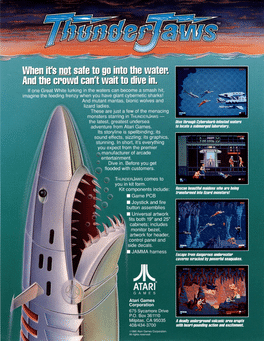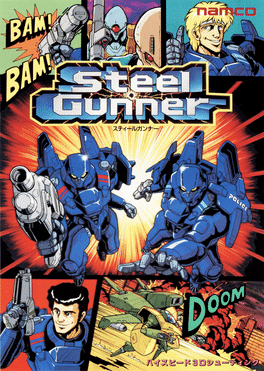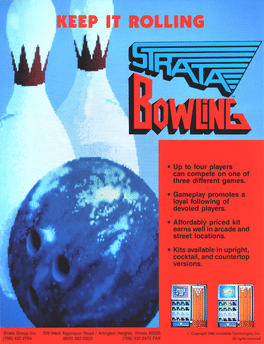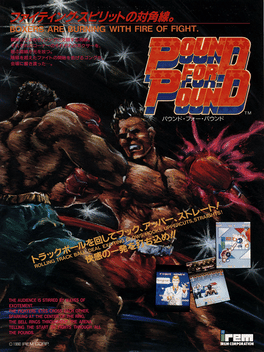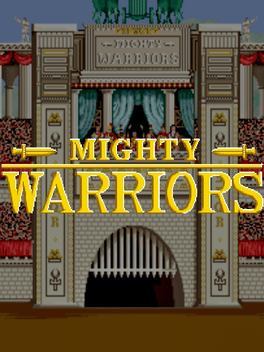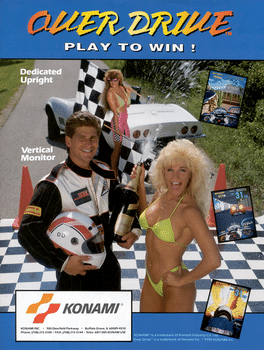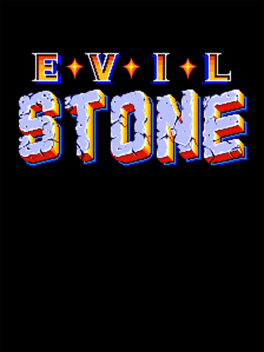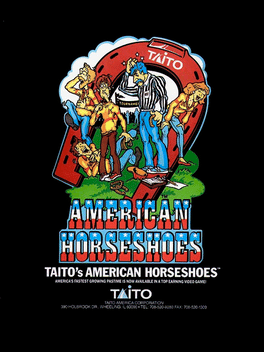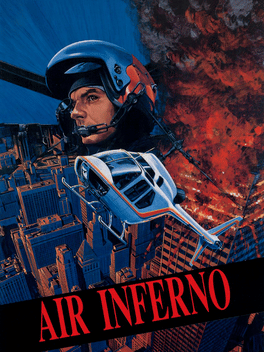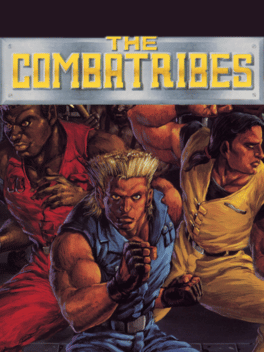New Arcade Games - Page 86
-
World Soccer Finals
1990
World Soccer Finals
1990
World Soccer Finals is a Coin-Operated Arcade Video Game produced by Leland in 1990. This game ranks a 1 on a scale out of 100 (100 = most often seen, 1=least common) in popularity based on census ownership records. Other machines made by Leland during the time period World Soccer Finals was produced include Pig Out, Ataxx, Brute Force, Danny Sullivan's Indy Heat, Dragon's Lair II, Ironman Ivan Stewart's Super Off Road, Ironman Ivan Stewart's Super Off Road Track Pak, All American Football, Viper, and Strike Zone Baseball. -
World Grand Prix 2
1990
-
World Stadium '90
1990
-
ThunderJaws
1990
ThunderJaws
1990
You are a member of an underwater special forces unit and have been selected to infiltrate Madam Q's headquarters and stop her demented plans before she can destroy the world -
Steel Gunner
1990
-
Strata Bowling
1990
-
Pound For Pound
1990
Pound For Pound
1990
An overhead boxing game by Irem with big and detailed characters and a high difficulty. -
Mighty Warriors
1990
Mighty Warriors
1990
A competitive one-on-one fighting game with characters who can occasionally mutate for a limited period of time. -
Over Drive
1990
-
Major Title
1990
Major Title
1990
A golf game that features single player, two-player and four-player options with tournament or stroke play. -
The Last Day
1990
The Last Day
1990
A jet shooter where you fight enemy jets and tanks while collecting power-ups. The game was produced in Korea only. -
Fantasy Land
1990
-
Golfing Greats
1990
-
Evil Stone
1990
Evil Stone
1990
Evil Stone is an odd game. It's a beat em up, but rather than taking place on a traditional scrolling path, it takes place on grids of floating rocks. Furthermore, it's a beat em up in which the player has no kind of health counter, and can theoretically take an endless number of hits without dying. -
American Horseshoes
1990
American Horseshoes
1990
Each player can choose from one of four characters: Lucky Lou, Diamond Dave, Tossin' Tom and Mayhem Mary. There are two pitches in each inning. Players may select grip and throwing angle prior to each pitch. The rolling of the trackball determines the distance of each pitch. After each inning the scoring with shown with an overhead shot of the stake area. Each player's score is shown throughout the game at the top of the screen. Up to nine innings can be played per game. -
Air Inferno
1990
Air Inferno
1990
Air Inferno is a 1990 flight simulation video game published by Taito Corporation in North American territories. -
Air Duel
1990
Air Duel
1990
star 5.1The player selects from a jet fighter or helicopter, shoot enemies in the air and ground, collect power-ups, and defeat bosses to advance levels. The game differs from most others in the genre in that you can change the aircraft you use at the start of each level. The jet fighter always shoots straight forward; power-ups increase the width and strength of its shots. The helicopter fires thinner and weaker shots, but turns in the direction it moves (similar to the later Zero Gunner), giving it great range; powerups increase the strength of shots, as well as the number of bullets per shot (adding a small "spread" effect to the shot while moving around). Both the fighter and the helicopter also start with three bombs which wipe out everything in their path, including enemy shots. These bombs are also unique compared to similar games, in that they produce a line of small horizontal blasts that can be "directed" at the line travels across the ground, by pressing left and right (similar to the helicopter's shots). Addit -
Double Dragon 3: The Rosetta Stone
1990
star 5.3The final game in the original trilogy. Billy and Jimmy Lee are returning from martial arts training when their paths cross a fortune teller. She tells them of a great evil in Egypt, their strongest adversary yet, and how the Rosetta Stones can aid them. This game features weapon shops where Billy and Jimmy can buy power-ups, tricks, energy and extra lives to aid them in their quest. Power-ups make Billy and Jimmy twice their size, increasing their damage done and range of attack. The character graphics have changed, moving away from cartoon style graphics to more realistic looking characters. -
Success Joe
1990
Success Joe
1990
Extremely rare, this game is based on the classic manga/anime series Ashita no Joe (Tomorrow's Joe). The manga ran from 1968 to 1973 in Shonen Magazine. There were also 2 TV series that ran from 1970 to 1971 and 1980 to 1981 and a movie was released in 1980. When one of Joe's old rivals, Rikishi, died in the ring in 1970, Kodansha publishing actually held a funeral service for him. Over 700 people attended from all over Japan. An actual Buddhist priest presided over the funeral, held in a full-sized boxing ring. -
The Combatribes
1990


